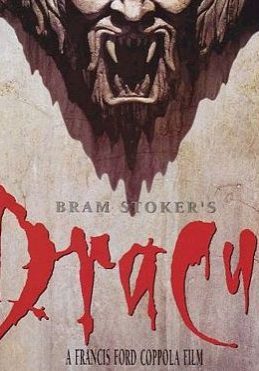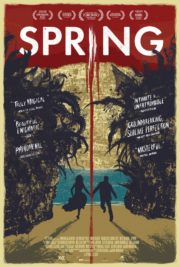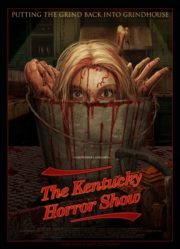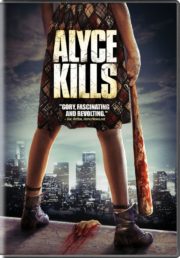A Symphony of Shadows: The Cinematic Resurrection of Dracula
“Listen to them, the children of the night. What music they make!” With these chilling words, Francis Ford Coppola’s ‘Dracula’ (1992) invites us into its gothic world with a beguiling allure, steeped in vampiric mythology. A passionate director known for his mastery of film, Coppola delivers a rich adaptation of Bram Stoker’s 1897 novel, enfolding audiences in an operatic horror experience that stands the test of time. The film revolves around the immortal count Dracula, who, having grown weary of his own timeless existence, ventures from his desolate castle in Transylvania to Victorian London in pursuit of his long-lost love. As he preys upon the living, a small group led by Professor Van Helsing rises to confront the ancient evil. Without revealing more, let us sink our teeth into the soul of this immortal film.
Terror in the Shadows: Crafting Dracula’s Haunting World
Atmosphere and Tone
The atmosphere in ‘Dracula’ is a character unto itself, meticulously crafted through Coppola’s use of suspense, foreboding, and chilling visuals that together weave an intricate lace of dread. The film’s opening, adorned with historical backstory and a crimson palette, establishes a tone that is both grandiose and eerie. As scenes unfold, the director skilfully modulates the tension, allowing fear to seep into our bones when least expected.
Cinematography and Visuals
Eiko Ishioka’s costume design and Thomas E. Sanders’ production design work in concert with the film’s cinematography to create a visual feast. Michael Ballhaus’ lens captures the spectral grandeur of Dracula’s world through a palette that oscillates between the bleak, desaturated hues of despair and the vibrant, almost lurid colors of passion and lust. The camera twists through shadowy corridors, employs disorienting angles to unsettle viewers and leans into practical effects that give the film an authentic, old-world horror aesthetic. This visual storytelling is reinforced by groundbreaking special effects that predate the digital era yet remain hauntingly effective.
Soundtrack and Sound Effects
The film’s auditory landscape, designed by sound maestro Gary Rydstrom, is as vital as its visual specter. Wojciech Kilar’s score is a masterpiece of gothic music that elevates the horror to a visceral experience. Each cello stroke and crescendo is a calculated step in tightening the knots of suspense. With sounds that range from the whispers of the night to the screams of the damned, the film’s audio is a master class in how horror’s essence can be amplified through ears alone, creating a sense of inescapable immersion.
Unleashing the Darkness: Performance and Horror Elements
Characterization and Performance
With a stellar cast headlined by Gary Oldman’s transformative portrayal of Count Dracula, the film offers a pantheon of memorable performances. Oldman shifts between vulnerable and monstrous with a finesse that is spellbinding, while Anthony Hopkins as Van Helsing delivers an eccentric, yet gripping antagonist to Dracula’s brooding menace. Winona Ryder and Keanu Reeves offer compelling portraits of innocence ensnared by darkness, although Reeves’ English accent has become infamous for its wavering credibility amongst critics and audiences alike.
Horror Type and Techniques
‘Dracula’ embraces supernatural horror. It delves into the fantastical with its demonic rituals and shape-shifting entities, yet interlaces these elements with the psychological by exploring the horrors of eternal longing and despair. Coppola leans more towards the visceral reaction to bodies defiled and the grotesque, but never shirks from a jump scare when it serves the story. The film’s horror mechanics are intricately knotted together, balancing a fine line between the exploitative and the artistic.
Themes and Commentary
Beyond the screams and shadows, ‘Dracula’ is a narrative rich with themes ranging from the corruption of the soul to the relentless pursuit of love beyond death. Coppola ventures deeper, scrutinizing the societal fears of the unknown and the foreign, mirroring Dracula’s encroachment upon Victorian England. It serves as a form of societal allegory, drawing parallels to the fears and anxieties of its audience’s contemporary landscape.
Perpetual Night: Dracula’s Enduring Allure
Does ‘Dracula’ stand as a masterpiece of horror? Absolutely. The film is not only frightening in its own uniquely baroque way but also thought-provoking and innovative in its reimagining of a classic tale. ‘Dracula’ is a cinematic phantasmagoria that will enchant horror connoisseurs while potentially overwhelming the casual viewer with its stylistic bravado.
Yet, its very extravagance, while a feast for the senses, may be daunting for those unused to such decadent horror.
In comparing ‘Dracula’ to other genre entries, one might view it as a lavish counterpart to the austerity of ‘Nosferatu’ or the expressive chiaroscuro of ‘Bram Stoker’s Dracula.’ It is a film that luxuriates in its own excess, offering a contrast to the restraint that characterizes more subdued horror narratives.
Ultimately, ‘Dracula’ remains an impressive display of horror’s capacity to change shape – much like its titular character. Despite minor missteps, it is a film that weaves a mesmerizing spell of terror and romance, earning its place as a gothic classic. Viewer discretion is advised for a younger audience due to its explicit content and macabre themes. For those viewers who revel in the orchestration of exquisite horror and tragic romance, Francis Ford Coppola’s ‘Dracula’ beckons with open arms into its eternal embrace.




